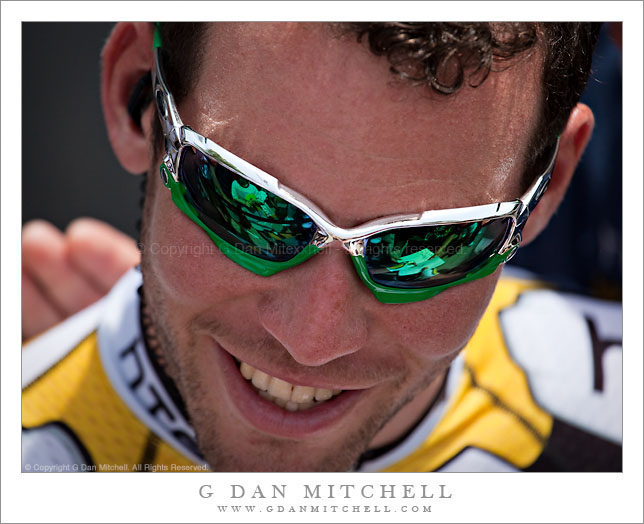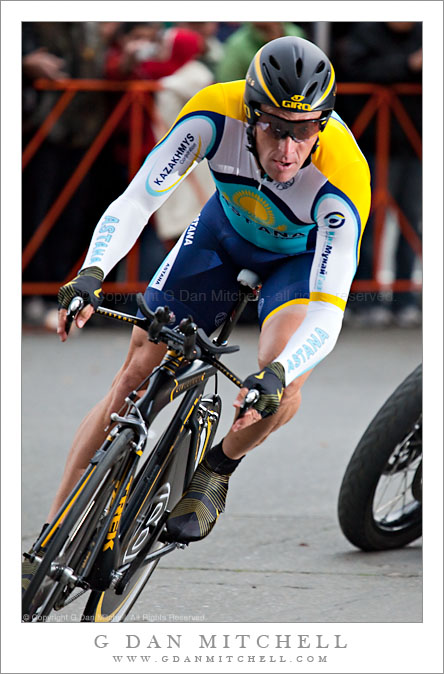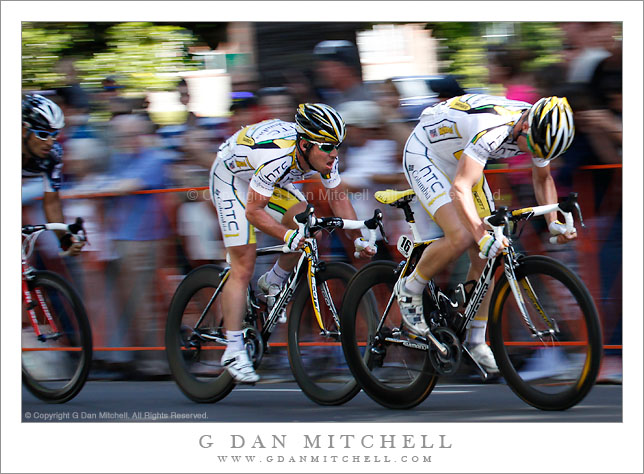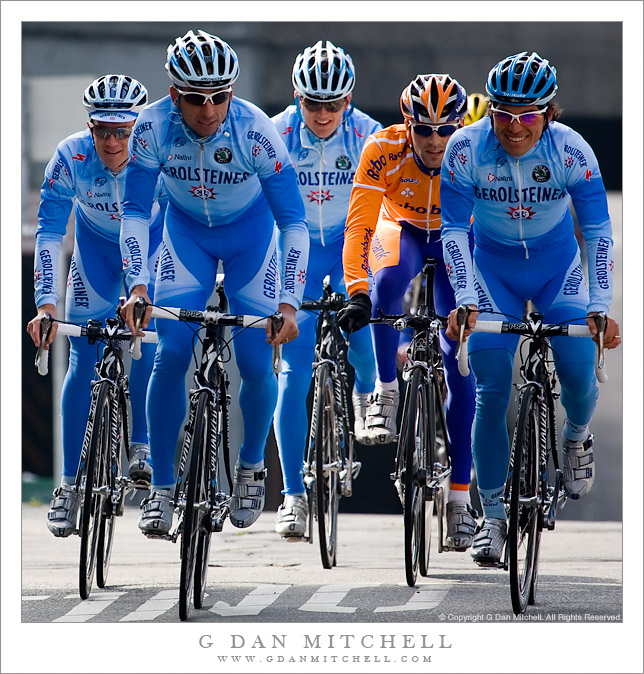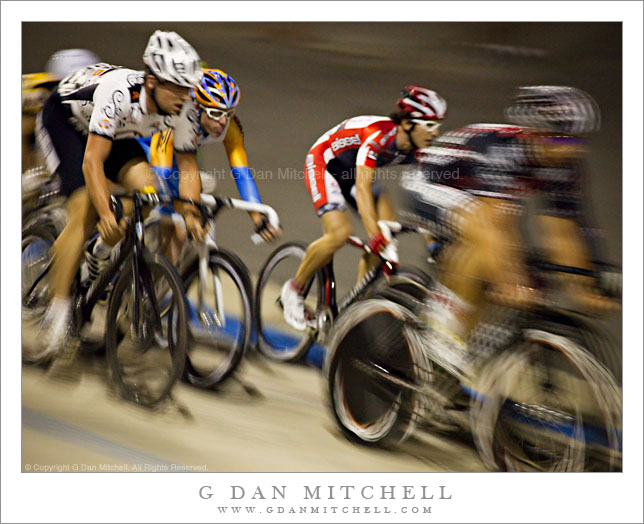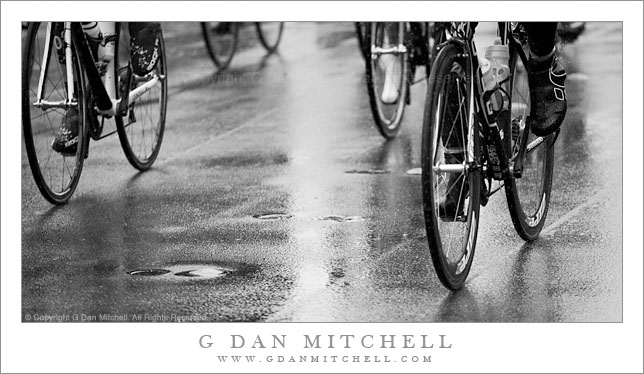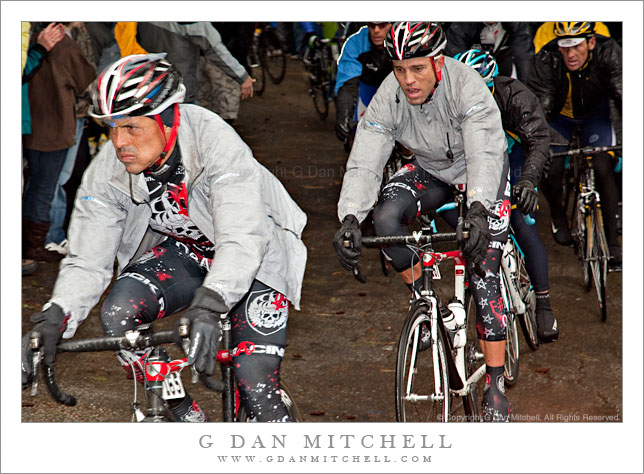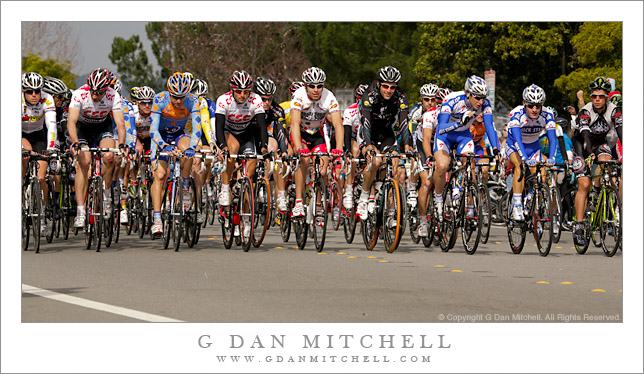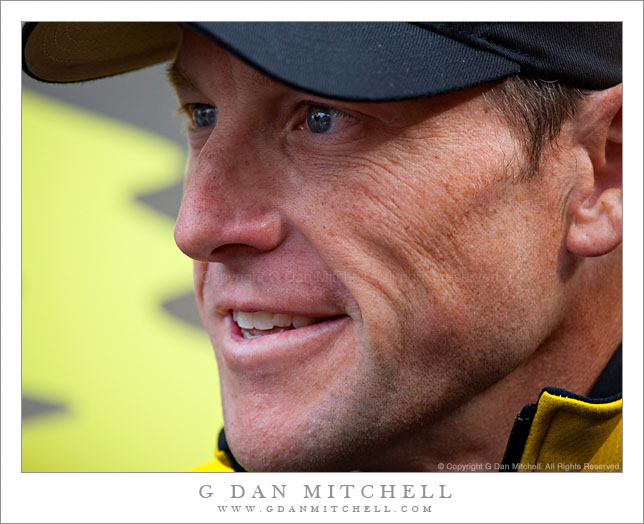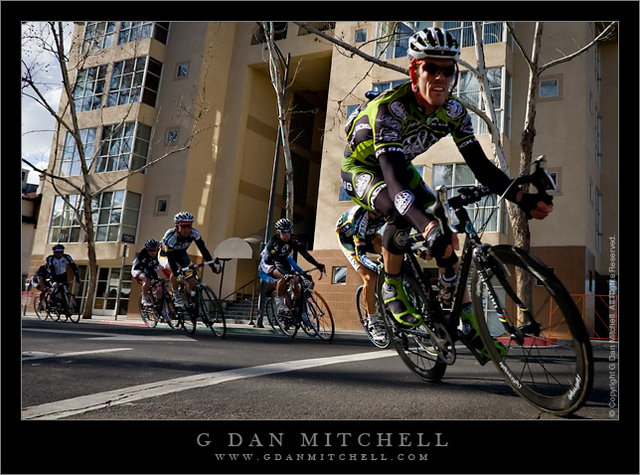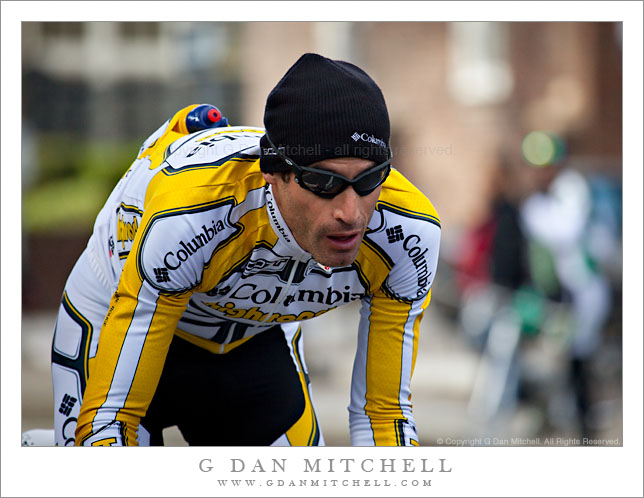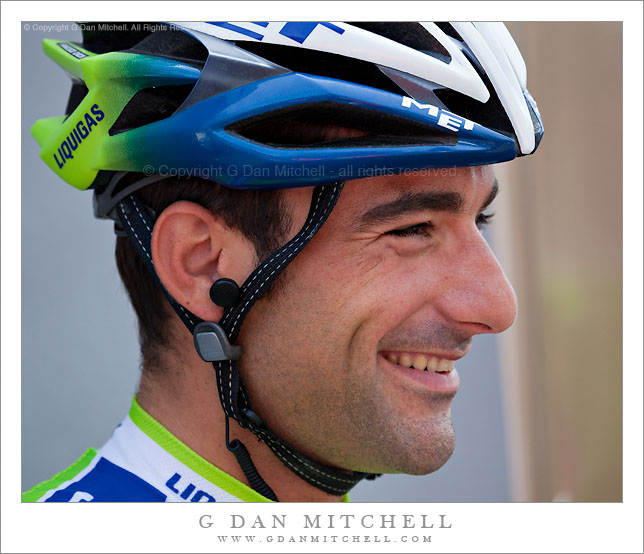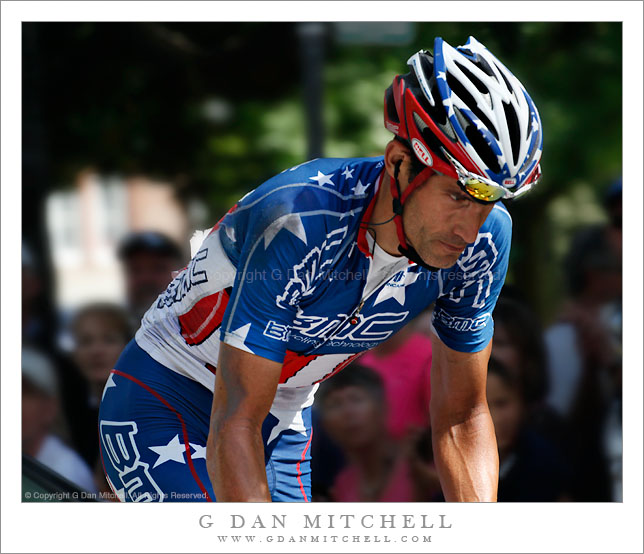Mark Cavendish, 2010 Tour of California. Nevada City, California. May 16. 2010. © Copyright G Dan Mitchell – all rights reserved.
Columbia HTC sprinter Mark Cavendish signs autographs before the start of stage one of the 2010 Amgen Tour of California in Nevada City, California.
One more photograph from this year’s Amgen Tour of California, this one shot in the “pit” area before the start of the stage in Nevada City, California. Cavendish went to to win the sprint and the stage later that day in Sacramento.
Why another cycling photo? Well… I’m spending my weekend grading term papers and other end-of-term work from my students. I’ve had little time to work on photography for the past week, and I’ve had this one last 2010 TOC photograph waiting for posting – so I’m taking advantage of that, making this post, having another cup of coffee, and getting back to the grading!
G Dan Mitchell Photography
About | Flickr | Twitter | Facebook | Google+ | 500px.com | LinkedIn | Email
Text, photographs, and other media are © Copyright G Dan Mitchell (or others when indicated) and are not in the public domain and may not be used on websites, blogs, or in other media without advance permission from G Dan Mitchell.
(Basic EXIF data may be available by “mousing over” large images in posts. Leave a comment if you want to know more.)

